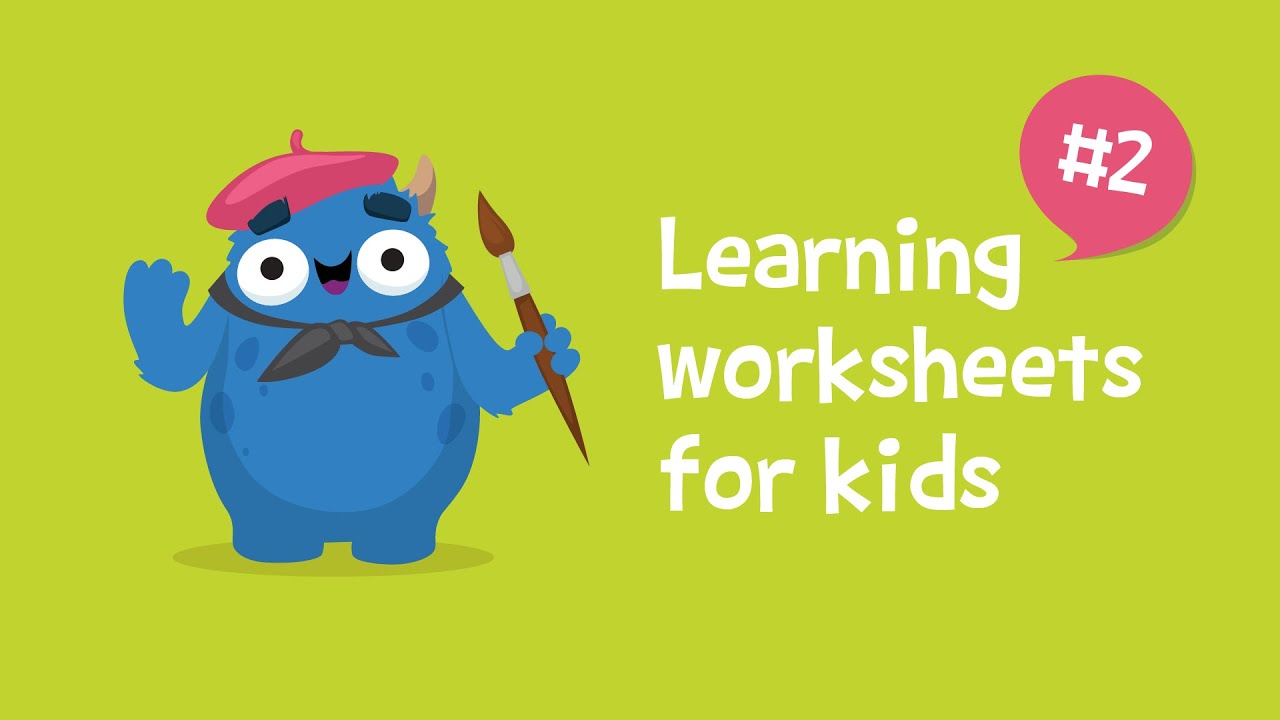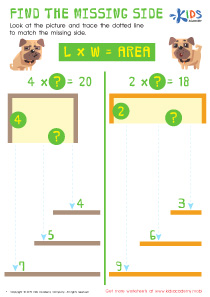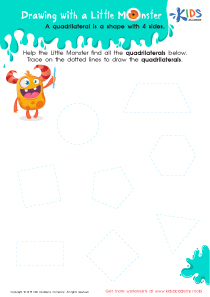Shape Recognition Easy Fractions of Shapes Worksheets for Ages 5-8
5 filtered results
-
From - To
Explore our engaging "Shape Recognition Easy Fractions of Shapes Worksheets" designed for children ages 5-8. These worksheets are perfect for introducing young learners to the concept of fractions through enjoyable shape activities. Each worksheet combines visual elements with simple equations, helping kids recognize various shapes while understanding basic fractional concepts. With vibrant colors and fun illustrations, our resources captivate young minds, making learning both effective and enjoyable. Ideal for classroom or at-home learning, these worksheets support essential skills development in shape recognition and early math. Foster your child's understanding of fractions with our interactive and creative activities today!
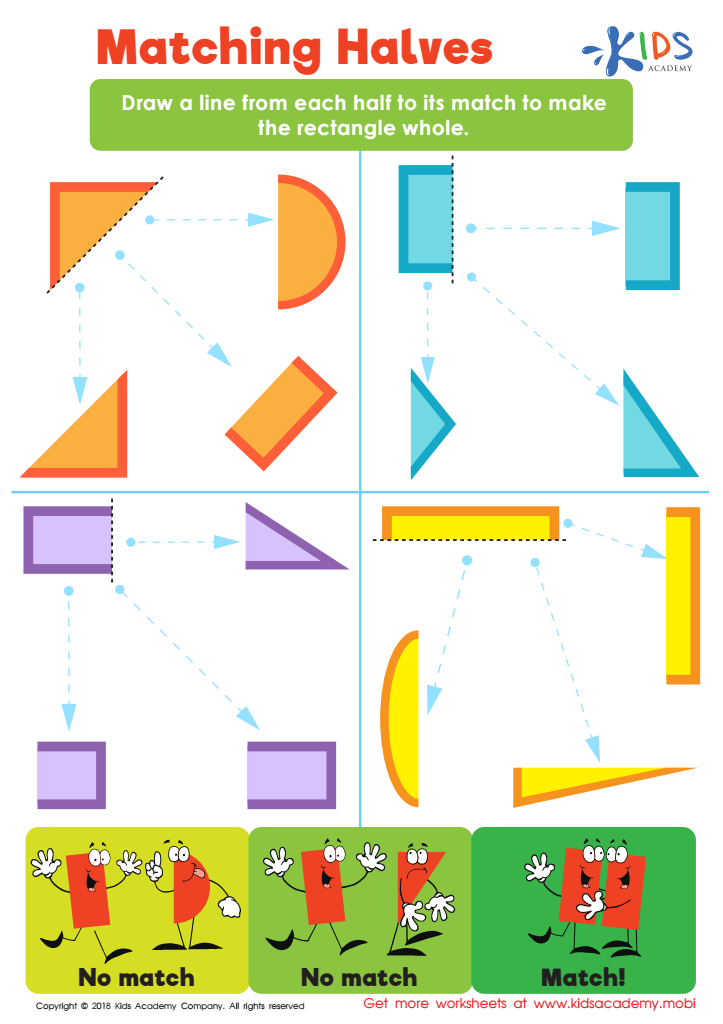

Matching Halves Worksheet
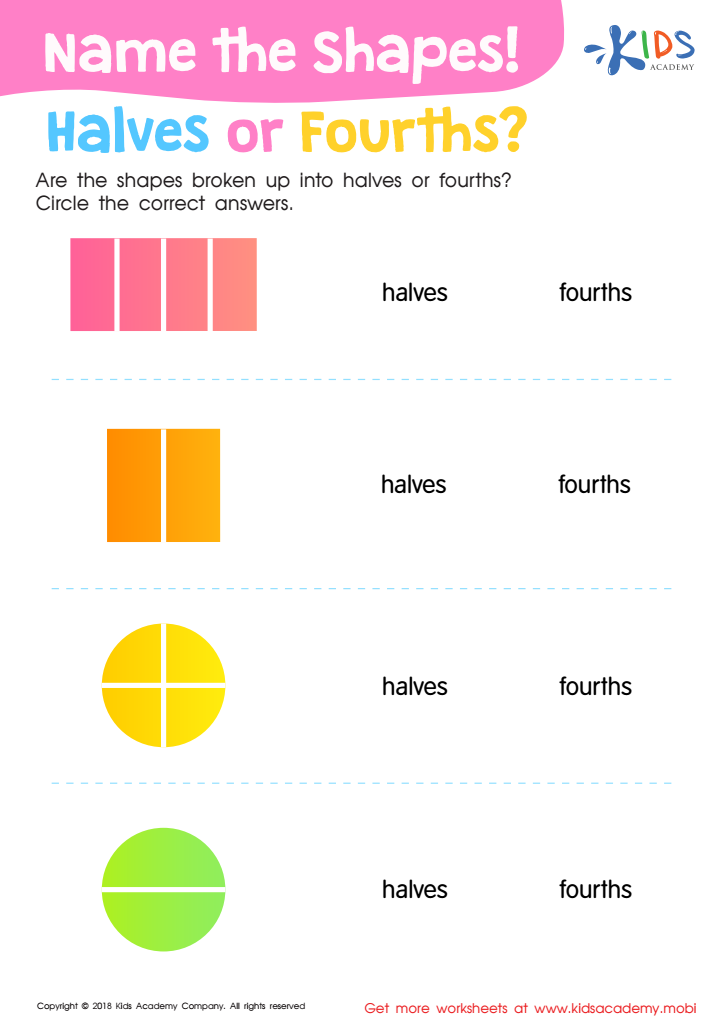

Name the Shapes Halves or Fourths? Worksheet
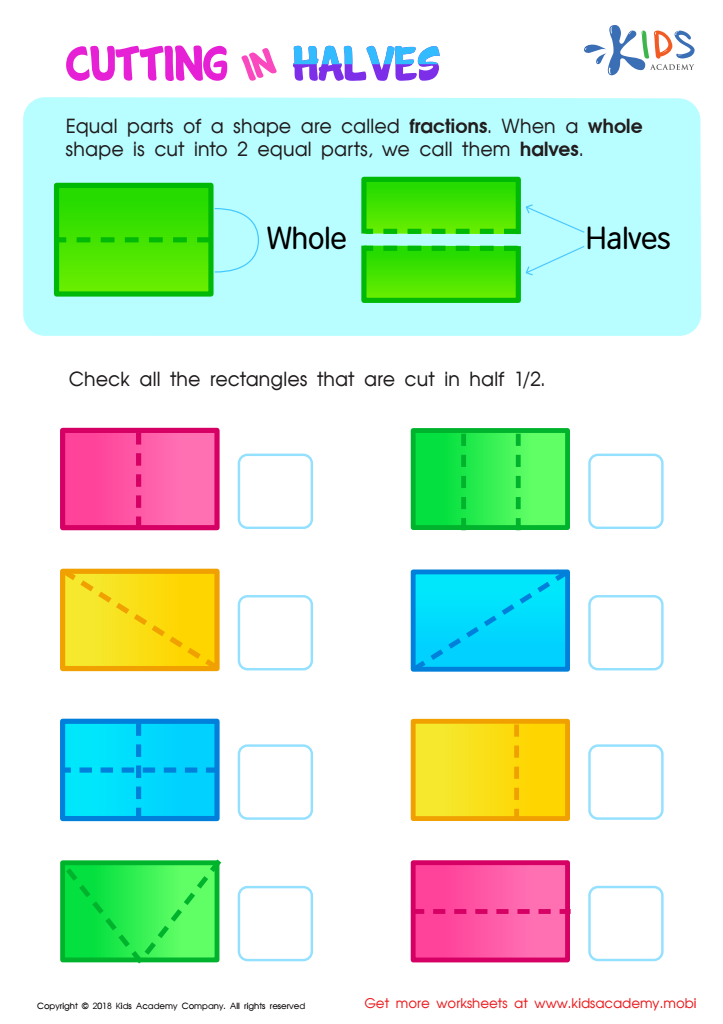

Cutting in Halves Worksheet
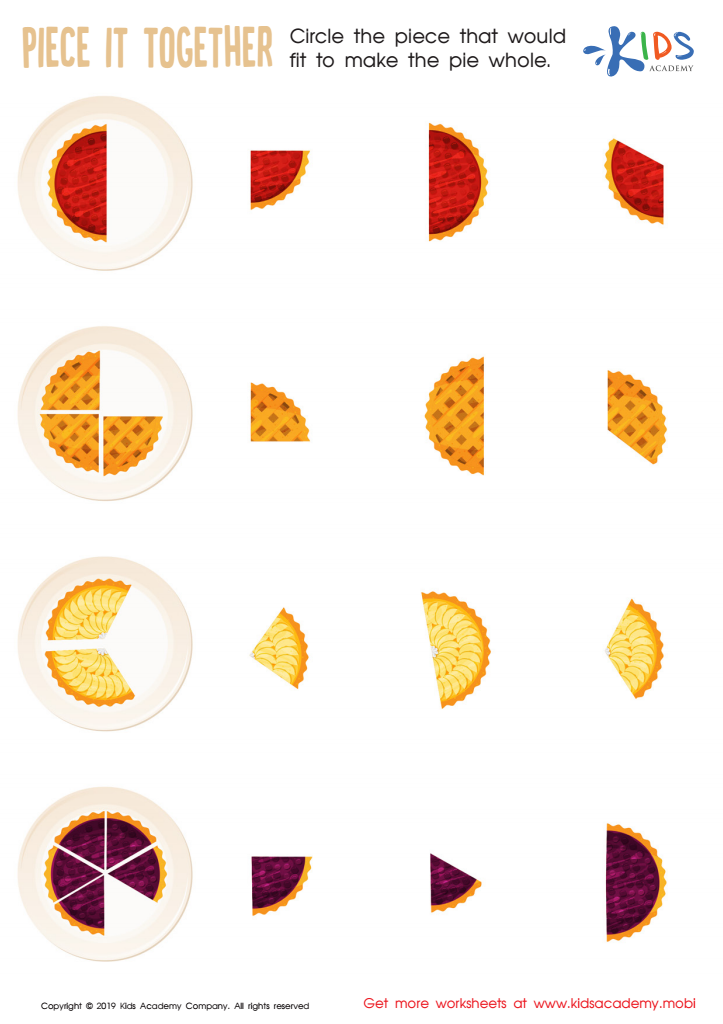

Piece it together Worksheet
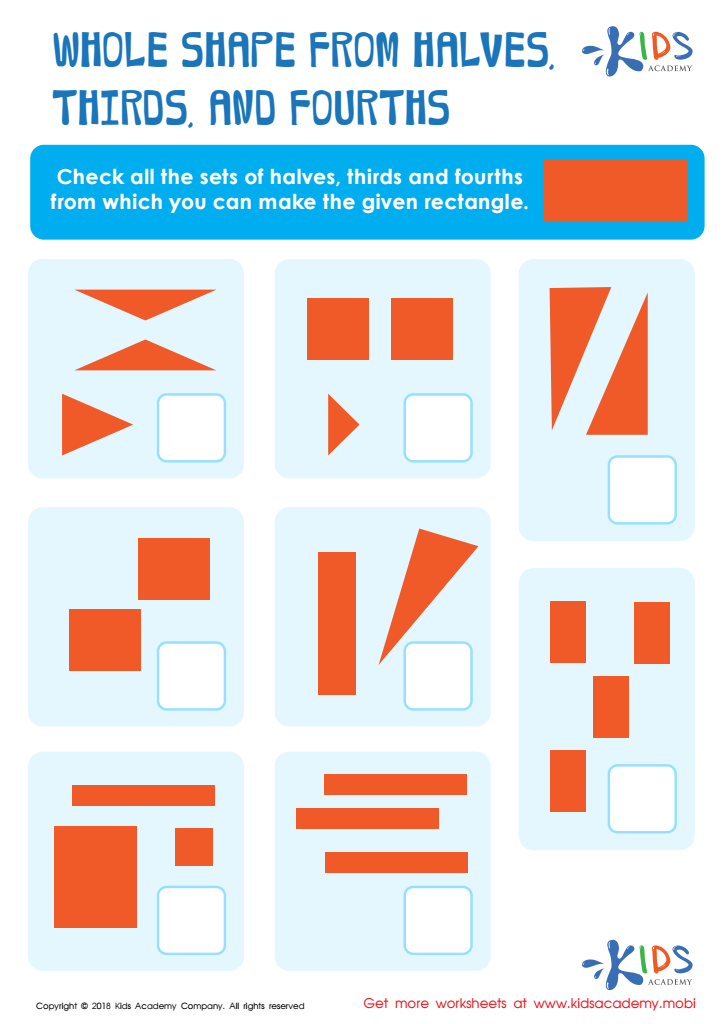

Whole Shape from Halves, Thirds and Fourths Worksheet
Shape recognition and understanding easy fractions of shapes are crucial developmental skills for children ages 5-8. These foundational concepts serve as building blocks for later mathematical understanding. When children learn to recognize shapes, they not only develop spatial awareness but also enhance their ability to problem-solve and think critically. This early exposure to shapes helps children categorize the world around them, promoting cognitive development.
Understanding easy fractions of shapes introduces children to basic mathematical ideas in a concrete way. By learning to identify halves, thirds, and quarters through visual shapes, children can grasp the concept of parts of a whole. This knowledge becomes essential as they progress to more complex mathematical concepts in future grades.
Moreover, integrating shape recognition and fractions into a child's learning engages their creativity and fosters positive attitudes toward math. For parents and teachers, these activities can serve as fun and interactive ways to teach critical concepts that are applicable in daily life. Encouraging kids to experiment with shapes and fractions not only enriches their learning experience but also prepares them for academic success, instilling confidence and curiosity in their mathematical journey. Ultimately, these skills lay the groundwork for lifelong learning and problem-solving abilities.
 Assign to My Students
Assign to My Students




